
- Entertainment
- Submit Your Story

European road trip checklist: Here are the things to remember
Heading abroad this summer? Here’s what you need to make sure you’ve completed it beforehand.

If you want to avoid the hustle and bustle of an airport and the complexities of hiring a car all while having full freedom to go wherever you want on holiday, taking your own vehicle overseas is a great plan.
With ferries going from various places in the UK, as well as the Euro Tunnel in Folkestone, access to mainland Europe is easier than you might expect, and if you book ahead, doesn’t have to be expensive.
But before heading overseas in your car, there are various checks to do, both on the car itself and in terms of paperwork. Here’s our European road trip checklist.
Pre-flight vehicle checks
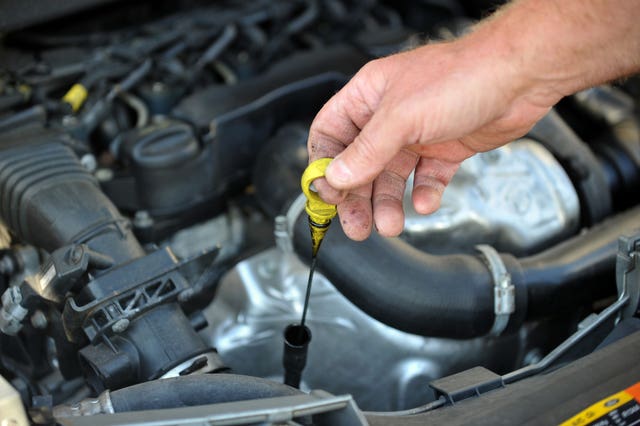
If you’re taking your car abroad, you will likely be clocking up hundreds, if not thousands of miles. It’s why you want to make sure it’s in perfect order before setting off. Ensure the vehicle’s servicing is up to date, and if one is due soon, it’s worth having it done before you set off.
Pop up the bonnet and check that the fluids are at the correct levels (engine oil, screen wash and brake fluid), and it’s worth taking extra bottles of these with you in case of top-ups. Make sure all the lights and indicators work, and that the tyres are in good condition and correctly inflated. If you have a spare tyre, make sure this is inflated properly, though hopefully you won’t need this.
It’s worth making sure there’s plenty of time left on your car’s MOT for your return as well.
Make sure your car is ready for European driving

On top of the maintenance checks we’ve mentioned, there are certain things you need for your car to make it conform to laws in many European countries. Before crossing the water to the continent, you should make sure you have a ‘UK’ sticker displayed at the rear of the car. This replaces the previous ‘GB’. If your car has a clear ‘UK’ on its rear number plate, that will suffice, though if driving in Spain, you will need to have the sticker as well.
Other European countries are stricter when it comes to essential kit to carry with you. The following is required:
Companies such as the AA and RAC will sell you a European driving kit bundle containing all of the above.
Get your documents in order

It’s not just your car that you need to get in order, but also your documents. You’ll need your passport to leave the country, and it’s worth keeping these safely on your person at all times, while anyone getting behind the wheel will need a full and valid driving licence.
Your car’s documents will be needed too, including the V5C registration document, which should be in your name. If it’s not (such as a leased vehicle), you will need to secure a certificate to show who it belongs to and that you’re entitled to drive it. Though an insurance green card is no longer required, you need to make sure you have a hard copy of your car insurance documents.
While breakdown cover is not mandatory, it would be ill-advised to take your car overseas without it. Don’t presume that it’s included with your insurance already or if your car is newer, either, and double-check it includes European cover. Your travel and health documents should be taken with you as well.

While toll roads are quite rare in the UK, they’re far more common on the continent, especially for motorways. Most of France and Italy’s motorways are covered by tolls, which often work by you picking up a slip of paper when first joining the road, keeping hold of this, and then presenting it to an attendant or machine when you come to the end of motorway or turn off. If you’re covering lots of miles this way, it can end up being pricey.
To avoid stopping, you can buy a Telepass (or similar), which is a tag that goes at the top of your windscreen and will automatically pay for the toll without you having to a stop. These need to be bought and registered beforehand.
Know your speed limits
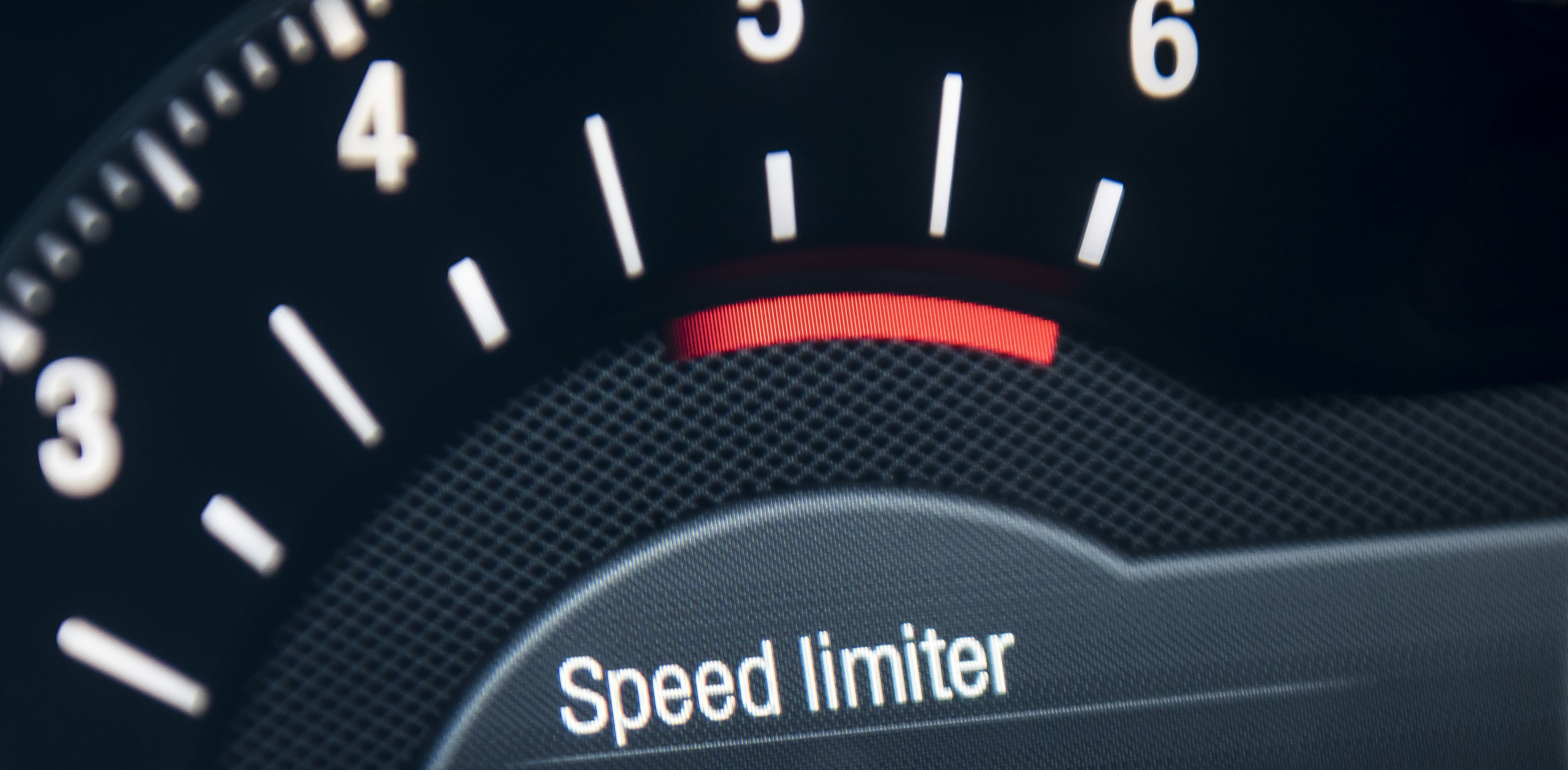
If you’re crossing borders when driving abroad, it’s worth being aware of the different speed limits. You should look beforehand to check up on these, and though a maximum of 130km/h (81mph) is commonplace on motorways, they are often lowered for more built-up areas.
Some countries, including France, also enforce lower speed limits in poor weather (rain, for example). So if you’re driving in the wet, the speed limiter drops from 130km/h (81mph) to 110km/h (68mph).
Be aware of stricter alcohol limits
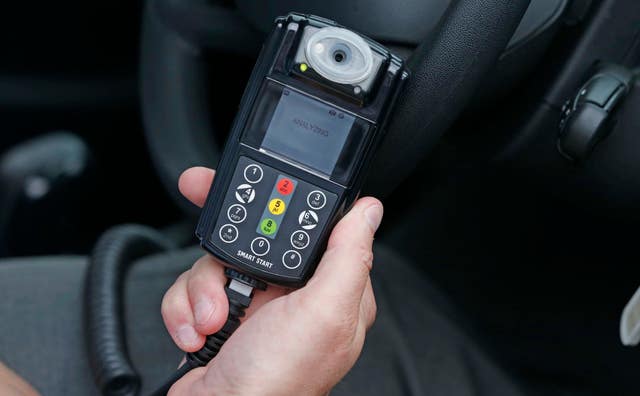
The UK, excluding Scotland, has one of the highest drink drive limits in the world, and if you’re driving abroad, you should be aware that other countries have much stricter rules on the level of alcohol you can have in your system while driving.
Countries such as the Czech Republic, Hungary and Slovakia all have a strict zero limit, which is widely enforced.
Be aware of Clean Air Zones

In the UK there are a growing number of low- or clean-air zones, which are being introduced to tackle pollution and restrict usage of some vehicles based on their age and emissions status. It’s the same in plenty of other European countries, especially larger cities.
You should check, especially if driving an older car, that you’re legally able to enter such areas in your vehicle. If driving in several French cities, you will need to buy and display a ‘Crit’Air’ emissions sticker, applicable to your vehicle, to be able to enter the zone. It shows the emissions status, and you can be fined for not having one. A similar scheme also operates in Germany.

Former students and teachers gather at Walsall school one last time before its demolition Your World | 13 hours ago
First look inside brand new Midland Metropolitan Hospital finally set to open next month Health | 10 hours ago
Will sparks fly for Andy from Codsall? He meets stunning mum from Wolverhampton on ITVs My Mum Your Dad in last night's episode Entertainment | 17 hours ago
Latest footage shows current state of Walsall's former Showcase Cinemas Plus Walsall | 22 hours ago
WATCH: Devastation as car demolishes Walsall bus stop in late night crash Transport | 14 hours ago
Driving Abroad , Green Card
22nd september 2023, the ultimate checklist for driving in europe, car insurance from just £125 per year.
Blog / Green Card / The ultimate checklist for driving in Europe
Besides getting your vehicle in good shape for a continental road trip, there’s a lot more to think about before driving in Europe. Here’s our checklist of everything you need to drive in Europe, from travel documents to the extra equipment and spares you should carry to keep on the right side of the law.
Important travel documents
When driving in Europe you will need to be able to produce all manner of important documents to prove you are eligible to drive, you own your vehicle, and you have the correct insurance. Here is a list of what you need to take.
Full valid driving licence
Not taking your driving licence is an easy oversight, like not signing your passport before you get to the ferry port or the Channel Tunnel! Don’t forget your full driving licence when driving in Europe. It will be accepted in all countries in the EU and the European Economic Area (EEA).
Even though Switzerland isn’t in the EU or EEA, you can still use your UK driving licence as long as you are 18 or over.
Global Health Insurance Card (GHIC)
Motorists planning on driving in Europe will need to pack a Global Health Insurance Card (GHIC), which replaces the old European Health Insurance Card (EHIC).
GHIC will offer similar protection for travellers as that afforded by EHIC: ’emergency and medically necessary healthcare needs’ when a UK resident is in the EU on a temporary stay, for business or pleasure. The GHIC will not cover you in Iceland, Liechtenstein or Switzerland.
GHICs can be obtained through the NHS website and are free of charge. Travellers are advised to apply at least two weeks before their trip.
The GHIC is not intended as a replacement for regular travel insurance, which you should take out for protection against lost luggage, emergency illness or injury, delays or cancellations to your trip, and more.
Check your car insurance
If you are driving in Europe it’s always best to ensure your car insurance covers you whilst you are abroad, as you may not have overseas cover. We offer free European cover with our car insurance policies for up to 30, 60 or 90 days depending on your needs.
It is also worth noting you may need green card insurance should you be travelling to certain countries such as Albania, Ukraine, Turkey, Moldova, Russia, Belarus or Azerbaijan To find out how to get green card cover , contact Sterling on 0344 381 9990.
International Driving Permit
If you are driving in Europe, an International Driving Permit (IDP) will allow you to drive in countries where a UK licence alone is insufficient. An IDP can be obtained over the counter from the Post Office for £5.50. There are three types of IDP, each allowing you to drive in different countries, so if you are touring Europe, you may need more than one.
You can use the Post Office IDP checker tool to find out if you will need a permit, which permit you will need, and what supporting documentation you will need to supply with your application.
Holiday documentation
When you are driving in Europe you may be asked by border security to show your return ferry or Channel crossing tickets and your accommodation booking confirmation. Carry them with you and keep them to hand, keeping printouts of online bookings and confirmations to minimise inconvenience.
Your passport must be valid for at least six months. It’s also a good idea to take a photocopy and/or store your passport digitally and keep it separate to the original when you travel. This will help you get a replacement more easily if you lose your passport while travelling.
Vehicle log book (V5C)
You must take your vehicle log book (V5C) with you if you’re taking your vehicle abroad for less than 12 months and you may have to show it if you’re stopped at a port or while driving in Europe. The V5C tracks the registration and taxation history of a specific vehicle and confirms your ownership of it.
You’ll need to apply for a V5C or update your V5C in advance to ensure it arrives before your journey.

European breakdown cover
Our European breakdown cover is available from £42 a year and provides you with 60 days’ breakdown cover while driving in Europe in any one calendar year. Sterling can arrange roadside recovery or a reliable home repair service, whether your car or van breaks down in the UK, Europe or further afield.
Emissions stickers
When driving in Europe, you will find some countries have tough regulations that require you to buy and display an emissions sticker showing how much pollution your vehicle generates. They cost very little, but the fines you receive for not displaying a sticker can be very expensive.
Drivers travelling through parts of France should now display a windscreen emissions sticker labelling how much their car pollutes according to the French government. The label will set holidaymakers back £4, but should you fail to correctly display one, you may end up with a £58 fine, which could rise to £154 if not paid within 45 days.
Fines of around £640 could be handed out from 2024 onwards when the country’s camera-based enforcement goes live.
In total, there are 14 locations in France that require the sticker known as Crit’Air , which lasts for the lifespan of your vehicle and must be displayed before you cross the Channel. It is worth noting there are six different types of stickers and you will need to display the correct one upon entering the country. They range from 0/E to 5 with the cleanest polluting cars such as electric and hydrogen fuelled engines requiring a 0/E.
The 14 areas are:
- Bordeaux (starting in 2024)
- Aix-Marseille-Provence
- Montpellier
- Clermont-Ferrand
Cities with low emissions zones may prohibit your car at certain times and could even ban higher polluting vehicles completely. You can find out where you will need an emissions sticker and which of the four stickers you will need online.
Other European countries have also introduced emission regulations such as Switzerland with Stick’Air and Spain with DGT stickers .
Checklist of equipment needed for driving in Europe
In many European countries, it’s compulsory to have certain equipment in the car. Exactly what you need varies from country to country and time of year, but it usually includes some or all of the following.
Check your satnav
If you are driving in Europe, it is illegal in France and several other EU countries to use satnavs or other electronic equipment that alerts you of speed enforcement cameras. If your satnav provides such alerts, it is recommended that you switch them off before you enter Europe.
Reflective jackets
When driving in Europe there must be one reflective jacket for each passenger and they must be kept within the cabin of the car.
- Warning triangle

A warning triangle is compulsory in most countries. Many countries require you to have two: one for in front and one for behind your vehicle.
Two breathalysers
In most European countries, it is compulsory to carry a breathalyser in your car, but it makes sense to carry two. This is because if you only have one and are stopped by police and ordered to take a breath test, you will not have one to use in the event you are stopped again during your journey.
- Headlamp beam deflectors
When driving in Europe deflector stickers are needed to prevent dazzling oncoming drivers. You can buy deflector stickers from most car shops and, more expensively, at ferry ports and the Eurostar terminal. You may also be able to adjust the beam manually.
GB car sticker
You will need a GB sticker unless you have a GB Euro number plate.
- First aid kit
This is compulsory in Austria, France and Germany and advised in all other European countries.
Bulbs, basic tools and other spares
Replacement bulbs, belts, wiper blades, oil, water and other lubricants, along with the tools to fit replacement parts or top-up lubricant levels, are also advisable.
Research before you travel
Equipment needs for driving in Europe vary from country to country, so research what you need in the country of destination and the countries you will have to drive through.
Fines for non-compliance with local driving laws can be expensive and often payment is required on the spot.
Remember the rules of the road
Your muscle memory often kicks in when you are driving, but it’s imperative that you obey the rules of the road when behind the wheel in a foreign country. Unless you are driving in Ireland, Malta or Cyprus, you will be driving on the opposite side of the road when travelling through Europe.
This may not seem like a drastic change, but it is enough to confuse first-time holiday drivers. Ensure you give yourself extra time to complete your journey and take regular breaks. And pay extra attention when approaching roundabouts, junctions and overtaking as this works differently to driving in the UK.
Driving rules in specific countries
We’ve summarised the basic information you need to know ahead of driving in the most popular European countries Brits travel to each year.
Driving in Belgium
Compulsory items.
- Reflective jacket
Emission rules
Antwerp and Brussels both have a low emission zone (LEZ).
Driving in France
- Warning triangle
- Crit’Air sticker
- Winter tyres or snow chains – these are compulsory in some areas during winter (1 November to 31 March)
A number of French cities now have low emission schemes, and more are being added all the time.
Driving in Germany
- Reflective jacket for each occupant – compulsory to wear if you leave your vehicle due to an accident or breakdown
- Headlamp beam deflectors
- Winter tyres or snow chains – these are compulsory in some areas during winter, or snowy conditions
- Environmental badge
- Umweltplakette sticker – this is the emissions sticker you need in Germany
Major cities such as Berlin, Hamburg, Frankfurt, Cologne, Stuttgart and Munich all have low emission zones. You will be required to display your emissions sticker known as ‘Umweltplakette’ to enter these zones. There are three colours of stickers: green, yellow and red. Each colour denotes your car’s emission standard.
Driving in Ireland
No special equipment is required.
There are no rules or schemes at the time of publication.
Driving in Italy
- Reflective jackets for each occupant – these are compulsory to wear if your vehicle breaks down or you are in an accident
- Winter tyres or snow chains – these are dependant on conditions, and during certain times of the year. Must be used where signs indicate
The majority of Italian cities now have low emission zones, especially in the northern regions. You will find restrictions in Milan, Florence, Turin, Rome and Bologna as well as others. A lot of these tourist destinations will ban you from driving during weekdays and some cars will be banned on Sundays too.
Driving in the Netherlands
No special equipment is required, but you will need a UK sticker.
Rotterdam, Utrecht and Arnhem have low emission zones (LEZs). Unlike other countries you will not need to order an emissions sticker for your vehicle in advance (it is quite easy to do so). All that matters is the date of your car’s first registration, which you can find on your vehicle registration certificate (V5C).
Driving in Portugal
- Prepaid motorway toll tickets – you can prepay tolls on the official Portugal Tolls website
Lisbon is the only city in Portugal to have a low emission zone (LEZ) and has two zones within it. You can drive in zone one provided your car complies with Euro 2 emission standards, which generally means cars manufactured since January 1997. You can drive in zone two if your car meets Euro 1 emission standards – those manufactured since January 1992.
Driving in Spain
- Two red warning triangles
- Reflective jacket for each occupant – you won’t be fined for not carrying one, but you could be for not wearing one on the road should you break down
- A spare wheel and tools to change one
Madrid and Barcelona both have permanent low emission zones (LEZ), with many other cities in Spain having temporary LEZ.
Driving in Switzerland
- Warning triangle which must be kept within reaching distance
- Snow chains to be used where signs indicate
- Motorway tax sticker – if you drive on the motorway you’ll need to display a colourful vignette sticker to show you’ve paid tax. You can buy these in advance online from the official Switzerland Travel Centre or get them from customs offices at the Swiss border
Geneva is the only city in Switzerland to have a low emission zone (LEZ). The entire metropolitan area of Geneva is included, as well as Carogue, Cologny, Lancy and Vernier.
European car insurance and breakdown cover
Whichever country you plan on driving to, you will need to ensure you have the right car insurance to give you peace of mind should the worst happen.
No matter the vehicle, make sure to take our breakdown insurance with you. It costs from as little as £46.80 a year. Read this blog to discover the true cost of not having breakdown cover .
Sterling also has a range of car insurance policies for every sort of car, van and campervan, with prices starting from £125 a year and EU cover available. Call us on 0344 381 9990 for a quote or request a callback at a time better suited to you.
Related blog posts
The ultimate guide to driving in france, couple’s year-long european road trip in a self-build campervan, moving to europe here’s everything you need to know, best places to drive to in europe on a budget, 20 helpful french phrases for your driving holiday in france, the best christmas markets to visit in your campervan, get a quote with us it's easy..

Car Insurance
Young driver insurance, classic car insurance, supercar insurance, home insurance, buildings insurance, contents insurance, buy to let insurance, holiday home insurance, taxi insurance, taxi liability insurance, van insurance, business van insurance, travel insurance, business insurance, private medical, rac breakdown.
There are a number of requirements you might not be aware for when driving in Europe, so it’s worth reading this guide, prepared by the RAC, carefully to find out everything you need.
Important documents for driving in Europe
- Full, valid driving licence and national insurance number
- Proof of vehicle insurance
- Proof of ID (passport)
- V5C certificate (the ‘log book’)
- Travel insurance documents
- European Breakdown Cover policy number and documents
- Before you travel ensure your vehicle’s tax and MOT are valid and up-to-date
- Crit’air sticker if driving in France
You may also need to carry other documents with you, namely:
- one or more international drivin g permits
- a UK sticker (if you don’t have a UK identifier with the Union flag on your number plate)
Required equipment for driving in Europe
- Reflective jackets (there must be one for each passenger and be kept within the cabin of the car)
- Warning triangle (compulsory in most countries)
- Headlamp beam deflectors (depending on your car, you’ll either need deflector stickers or have to adjust the beam manually)
- Safety helmets are compulsory for riders and passengers of motorcyclists and moped users
- UK car sticker (if you don’t have a GB Euro number plate, or no matter what’s on you number plate when driving in Cyprus, Malta or Spain)
- First aid kit (compulsory in Austria, France and Germany)
Recommended things to take with you for driving in Europe
- Fire extinguisher
- Replacement bulbs
- A high quality torch
- A spare fuel can
- Additional engine oil and water (for topping up)
- An up-to-date road map or satellite navigation system
- Refreshments and plenty of water
- If you have children, take some games you can play in the car during the journey
- Take extra supplies of medication in case you can’t get these abroad
- Photocopies of important documents
- European Health Insurance card
In addition to the checklist above, the next best thing to do is to familiarise yourself with the driving laws, specific entry requirements and compulsory items to carry for the countries you will be driving in.
You can find everything you need to know on RAC’s European countries advice pages below.
- Driving in France
- Driving in Spain
- Driving in Italy
- Driving in Germany
- Driving in Belgium
Before you leave
Adjust your headlights – It is a legal requirement not to dazzle oncoming drivers. Make sure you adjust your headlamps ready for driving on the right-hand side of the road. Headlamp converters (stickers you put on your headlights) are widely available.
Buy a UK sticker – Don’t forget that your vehicle must display the appropriate country identification letters (e.g. GB). Failure to do so may result in an on-the-spot fine, but if your number plates include a UK identifier with the Union flag, you do not need a sticker within the EU (except in Cyprus, Malta and Spain, where stickers are needed no matter what is shown on your number plate).

Make a Travel Pack – Create a travel pack containing all the appropriate documentation you will need to comply with the legal requirements of the country you are visiting and to help if you get into difficulties. In addition to your passport and driving licence this may include your vehicle registration document (V5); motor insurance certificate; International Driving Permit (if required or advised); breakdown policy and contact numbers; travel insurance documents, and any emergency helpline numbers.
Check your Breakdown Cover Extends to Europe – You may need to increase your existing cover or take out standalone European breakdown policy to avoid unnecessary stress and significant additional expense if anything goes wrong.
Check Your Car Insurance – Make sure your Car Insurance covers you to drive abroad. Check with your broker or insurer that you’re fully covered to drive abroad. If you don’t have overseas cover, you will only have the minimum legal cover (usually third party only) in the EU and you may need to pay an extra premium to extend your insurance cover.
If you’re hiring a car, don’t forget to cover your hire excess. In the event your rental car is damaged or stolen, or if you put the wrong fuel in, your rental company will expect you to pay to repair or replace the vehicle. Car hire excess insurance protects your excess, meaning you can claim back any charges.

Need a Visa? – Make sure you’ve got correct visas for the country you are visiting and that your passport is valid.
First Time Abroad? – All first-time adult passport applicants must now attend an interview to verify their identity. It now takes up to six weeks to get a first passport.
Passport Validity Check – For certain countries – and in the event of a no deal Brexit – your passport must be valid for six months after the date you travel and be less than 10 years old.
Vaccine Check – Visit a travel health centre or your GP to find out what vaccinations or medication you may need before your trip – do this early as some destinations require vaccinations months in advance of your trip.
Don’t Travel Without Travel Insurance – If you become seriously ill or injured abroad, you will need full Travel Insurance to cover any medical bills, otherwise you could be left with a hefty bill after you get better – most countries will even charge you if an ambulance is called out. Also make sure your insurance covers you for any activities you are likely to undertake such as water sports and you are covered should you decide to ride or be a passenger on a motorbike or moped.
Get a Free European Health Insurance Card – A European health card isn’t a substitute for travel insurance, but it does entitle you to free or reduced-cost emergency care in some instances. To find out more about what they cover, visit the NHS advice page . Also remember, you need to call 112 to contact the emergency services in any EU country.
Article Courtesy of RAC

Student Home Insurance
If your teenager is about to go and study at a UK college or university then your Home Insurance could cover them as standard.

International Dog Day 2024
It’s International Dog Day and to celebrate we are giving a £50 Amazon voucher on our Facebook and Twitter pages to the best doggy pictures.

Left-Handed Facts
Did you know that 12% of the world is left handed? The International Left-Handers Day is celebrated on the 13th August.
Get a Quote
Our Local Branches >
Enquiry Form >
Schedule Callback >
Our Insurance Products
Average Rating
From 3164 reviews, get a quote >.
Find your local branch >
Is Laurie Ross the right Insurance Broker for you?
Laurie Ross have been insuring people and businesses since 1973 and our experience has taught us that every individual and business is unique.
Insurance provides ‘peace of mind’ and we pride ourselves on delivering the right product, excellent customer service and competitive rates in an open, transparent and professional way. We call it ‘The Laurie Ross Way’.
We also strongly believe that as your broker, we should support you in the event that you need to make a claim. Our in-house claims team will support you throughout the entire process and work to ensure that everything is resolved as quickly as possible to minimise any stress and get you back to normal.
As a community insurance broker we pledge to make a difference in our communities and donate to the charities most loved by our customers. Each year our team walk, run, dress up, dress down, abseil etc. all to fundraise and over the last 5 years, with the help of our customers, insurers and suppliers we have donated over £150,000 to many local charities.
At Laurie Ross, we pride ourselves on our open, honest and transparent service; when you call our branches, you are answered by a member of our team – not an IVR or a call centre queue; and when you pop in, you can sit down, have a tea and a friendly chat. From our high street locations, we support customers across Scotland including in Glasgow, Dundee, Edinburgh, Perth and Aberdeen. Get in touch to find out how we can help you today.
We are recognised as a Broker of Choice by leading UK Insurers:

Kirkintilloch: 73 Townhead, Kirkintilloch, Glasgow G66 1NN Phone: 01236 737277
Hamilton: 10A Gateside St, Hamilton ML3 7JG Phone: 01698 891547
Partick: 255 Dumbarton Rd, Glasgow G11 6AB Phone: 0141 946 1111
Mount Florida: 37 Carmunnock Rd, Mount Florida, Glasgow G44 4TZ Phone: 0141 212 9555
Paisley: 20 Causeyside St, Paisley PA1 1UN Phone: 0141 848 7300
Rutherglen: 249 Main St, Rutherglen, Glasgow G73 2HN Phone: 0141 643 2131
Shettleston: 1261-1265 Shettleston Rd, Glasgow G32 7NG Phone: 0141 778 5311
Aberdeen: ComCab, West Centurion Court, North Esplanade West, Aberdeen AB11 5QH Phone: 01224 793540
Useful Links
Laurie Ross is a trading name of Laurie Ross Limited which is part of Howden . We are authorised and regulated by the Financial Conduct Authority registration number 311353. Registered Office: 37 Carmunnock Road, Mount Florida, Glasgow G44 4TZ. Companies House registration Number SC053328

Copyright 2024 Laurie Ross. All Rights Reserved
DRIVING IN EUROPE
If you're heading abroad with your car, you may be wondering what the legal requirements are for driving in Europe – and particularly, driving in Europe after Brexit.
To make it easier, we've put together a driving in Europe checklist, covering areas such as driving licenses, car insurance, and UK stickers. Not having the correct documentation could land you a heavy fine, so have a read to make sure that you’ve got everything you need before you set off.
Read our driving abroad checklist
Driving in Europe documents
Uk driving license.
You need to take your UK driving license with you when you drive in Europe. Check that it’s still valid and renew it online if it’s expired (or about to expire) at least two weeks before you travel.
International driving permit (IDP)
You don’t need an IDP to drive in the EU, Iceland, Liechtenstein, Norway or Switzerland as long as you have a UK photocard driving license .
- a paper driving license
- a license issued in Gibraltar, Guernsey, Jersey or the Isle of Man.
You should check with the embassy of the country you’ll be driving in to find out more. You may also need an IDP if you’re planning to visit a European country that’s not mentioned in the list above.
IDPs can be bought at Post Offices for £5.50. There are three different types, which are known as the 1926, 1949 and 1968 IDPs (the numbers refer to the dates of the conventions on road traffic that established them). The particular IDP you may need depends on what country you’re visiting. You can find a full breakdown of the IDP types by country here .
Certificate of motor insurance
In other countries, you may need additional insurance as well as a green card to show that you’re covered. Check the travel advice for the country you’re driving in to find out more.
Contact your insurer to find out how to get a green card for driving in Europe. They’ll either post a green card to you (allow up to six weeks for this) or tell you how to download and print a green card yourself.
Vehicle registration documents
If you’re taking your own vehicle to Europe for less than 12 months, then you'll need to carry your V5C log book with you.
If you’re taking a car that you’ve hired or leased, then you’ll need to get a VE103 form to show you have permission to take it out of the UK.
UK stickers
To travel in the EU, you either need a number plate with a UK flag on it or a UK sticker that’s clearly displayed on the rear of your car*. Contact your local Halfords store to find out how to order a UK number plate or buy a UK sticker online.
Please note: On September 28th 2021, 'UK' stickers replaced 'GB' stickers. If your vehicle still has a 'GB' sticker, you’ll need to change it to a 'UK' sticker before travelling in Europe.
European breakdown cover
Check that your existing car insurance covers you if you breakdown abroad. If not, you’ll either need to amend your existing policy or take out separate European breakdown cover. Repair costs in Europe can be pricey, so essential to ensure you’re adequately covered.
Driving and safety essentials to have in your car
Different European countries have different laws regarding what products you need to carry in your car. Here are the products that we’d always recommend having to hand when you’re driving in Europe, whether they’re specifically required by law or not.
High visibility jackets
It is a legal requirement to carry a high visibility jacket with you in a number of European countries, so that you can be seen by other drivers if you breakdown. . If you're travelling with other people, get one for each of your companions and ensure they're kept in the passenger compartment, not the boot.
Warning triangles
Warning triangles can be placed on the road to alert other drivers if you have a breakdown or emergency. They're a legal requirement in most EU nations, although the number required differs from country to country.

Breathalyser
While you’re no longer legally required to carry a breathalyser kit in France, it is still strongly advised.
We recommend carrying a disposable breathalyser in the car since legal alcohol limits are much stricter across Europe compared to in the UK; France’s blood alcohol limit is 0.05%, while the UK’s is 0.08%. You’ll find the same lower limit in Belgium, Germany, Netherlands, Italy, Spain, Austria, Denmark, Finland, Luxembourg, Switzerland, and Turkey too.
To be approved for use in France, the breathalyser needs to meet the NF French National Standard . You’ll also need to make sure that your breathalyser is in date, as disposable tests will have an expiry date.
Headlamp converters and spare bulb kits
To ensure you don't dazzle oncoming traffic, you'll need headlamp converters . This is because headlights on British cars are designed for driving on the left, not the right. Headlamp converters reposition the angle of the beam, ensuring other drivers are safe as well as improving your visibility.
Most European nations also recommend carrying a spare bulb kit so you can change your headlamps if one of them goes.
First aid kit
It’s always a good idea to have a first aid kit in your car, just in case someone gets hurt. Carrying a first aid kit is also a legal requirement in many European countries.
TOP TIP: For greater convenience, consider carrying a European driving kit. The Halfords Motoring Abroad Kit contains all of the products discussed above, so it’s a handy and cost-effective way to pick up all the essentials you need for driving abroad.
Driving Abroad Checklist
Use our checklist to check which items are compulsory or recommended for when you drive abroad.
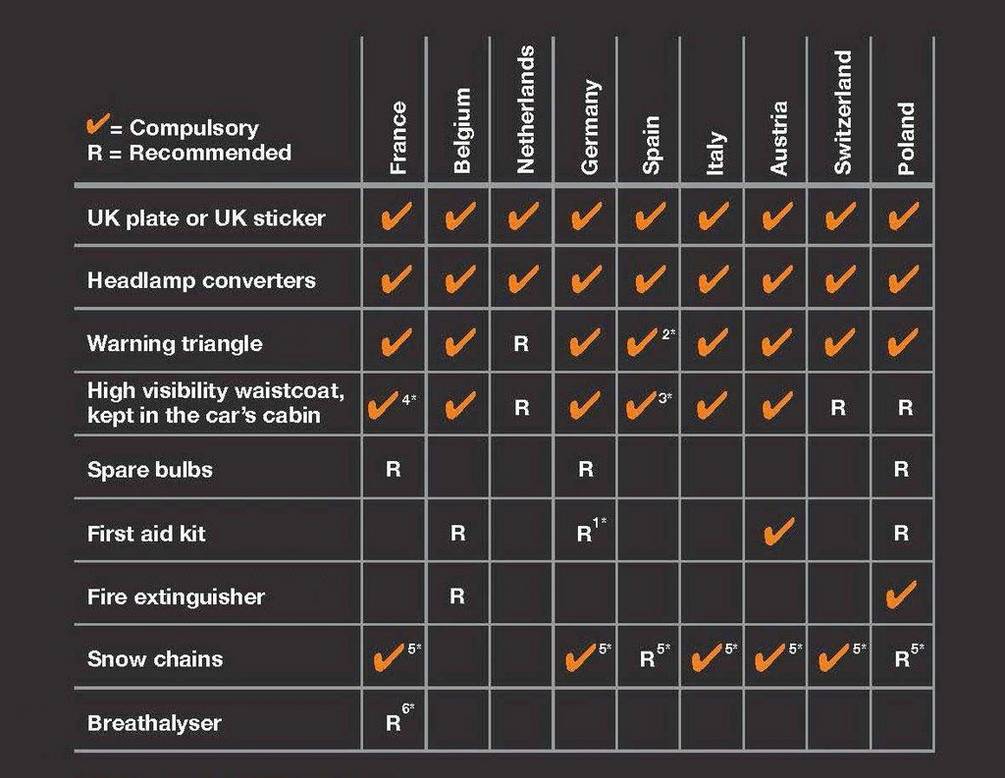
Download the checklist
Tyre laws by country
As with any long journey, it’s essential to check your tyres before setting off. Regardless of which country you are driving in, always make sure your tyres are correctly inflated. If you’re not sure what your tyre pressure should be, check your vehicle handbook. Here are the key tyre laws for some of the most popular European countries:
If you’re driving in France, there’s no need to carry a spare wheel in the vehicle or fit cars with winter tyres . However, when doing your tyre checks, make sure that each tyre has a minimum tread depth of 1.6mm.
Similarly to France, Belgian law states that tyres should have a minimum tread depth of 1.6mm. Winter tyres are also not mandatory.
Winter tyres are not mandatory in the Netherlands during the colder months and all-season tyres are sufficient. The minimum tread depth in the Netherlands is also 1.6mm.
While 1.6mm is the minimum tread depth in Germany, it is highly recommended that this doesn’t go below 4mm. However, if you’re driving in wintery conditions such as ice, snow and slush, it’s mandatory to have winter tyres that feature the Alpine symbol.
Spanish law requires you to carry a spare tyre or puncture repair kit in the vehicle. It’s essential that all tyres are correctly inflated and have 1.6mm tread depth.
During the winter months (15th November to 15th April) winter tyres are mandatory when driving around certain areas in Italy, particularly mountainous regions. The minimum tread depth is 1.6mm.
Austria also requires winter tyres to be fitted between 15th November – 15th April and must have a minimum tread depth of 4mm. You can be fined if your vehicle is not fitted with the appropriate tyres. Outside of the winter period, when summer or all-season tyres can be used, the minimum tread depth is 1.6mm.
There is no obligation for winter tyres when driving in Switzerland. While the minimum tread depth is 1.6mm it’s recommended that this does not go below 4mm during winter and 3mm during summer.
Minimum tread depth in Poland is 1.6mm and there is no obligation to fit winter tyres during the colder months.
Further tips for driving in Europe
- Check your car insurance and breakdown cover to ensure you're covered abroad.
- Check which documents you're required to carry, following our guidance above.
- Familiarise yourself with local speed limits, road signs and driving styles.
- Drive cautiously and remember to drive on the right side of the road.
- Ensure you're up to date on the latest driving laws for whichever country you're visiting. Laws can change quickly and we don't want you to be caught out!

Travel Tested Europe Travel Essentials: The Only Checklist You Need!
You’re planning a European trip and you need a Europe travel essentials checklist with all the travel-tested essentials for traveling to Europe so that you can have an amazing, stress-free trip. Well, good thing you landed exactly in this spot!
We all know planning a trip to Europe is a big deal and usually, it’s a bucket list travel goal getting checked off. The last thing anyone enjoys is the hassle of not having something they need!
The good news is I’ve traveled to Europe hundreds of times and along the way, I’ve made my fair share of Europe travel mistakes. But, they were all learning experiences! (Can you tell I’m a teacher?!)
So, I’ve put together everything I’ve learned in this ultimate guide of essentials for European travel so that you’re 10 steps ahead of the game before you even arrive at the airport.
Travel-Tested Europe Travel Essentials: The Only Checklist You Need!

You can fill countless suitcases ( spoiler: don’t do this) with whatever and however much you want but without the right things for your European adventure, a potential headache can steal all the fun from seeing the Eiffel Tower or Rome’s Colosseum.
So, let’s skip the headache and build your European travel checklist the right way!
Essentials for Traveling to Europe: The Fundamentals
When planning a trip to Europe, there are European travel necessities that fall into a few categories. Some are absolute musts while others are more personal or for comfort.
Let’s start with the fundamentals. After all, it doesn’t matter if you’ve packed the perfect outfits if you can’t get past airport security.
Whether you’re heading to Italy , Iceland , or Spain don’t leave home without using this guide as your Europe packing list!
Obvious, but a total deal breaker for international flights if there’s an issue with yours. Be sure it’s in good condition with no visible damage. Also, check that it has at least 2 pages with no stamps and 6+ months until its expiration date. I always keep my passport and important documents in this protective cover , but also for my sanity so I always know where they are! This passport case is great if there are multiple passports to store.
Driver’s License
If you’re renting a car, you will need to show this to pick up your vehicle. But even if you’re not, it’s smart to have another official form of identification with your photo on it in case something happens to your passport.
Maps for Driving & Getting Around
If you’re driving in Europe, download Google Maps for the area(s) where you’ll be driving before leaving home. From the Google Maps app, click on your name or initial in the top right corner. Select “Offline Maps.” Then, click on “Select Your Own Map” at the top. Highlight the area(s) where you need a map and download it. When you arrive at your European destination, you’ll be able to navigate in the car even without an internet connection. Similarly, the Maps.me app allows you to download maps to use offline. These maps can be especially great for when you’re out walking in a city because they show local shops, restaurants, walking paths, and more.
Using your debit card at a local ATM once you arrive is the savviest and most convenient way to get local currency at the best possible exchange rate. Also, debit cards typically have a Visa or MasterCard logo on them and require a PIN. In some cases, a purchase you need or want to make will require a card with a PIN like getting gas in a remote part of Iceland or buying entry tickets to a castle in Germany. ProTip: The Charles Schwab debit card refunds 100% of any ATM or withdrawal fees no matter where you are in the world. Don’t have an account? It’s free to set up. Plus, you can deposit a small amount into your newly created “travel account” to use for your trip. If your wallet gets stolen or you encounter any fraud, only this account with a small amount of money is at risk instead of your main bank account.
Travel Rewards Credit Card (with no foreign exchange fees)
For 95% (if not all) of your purchases in Europe from restaurants to shops, hotels, top sights, and museums can and should be made with a credit card. I recommend (and use myself!) a travel rewards credit card like this for every purchase possible for fraud protection (i.e. when that bowl you shipped from Tuscany never arrives) and for the best possible purchase exchange rate with no fee. ProTip: When making credit card purchases in Europe, you’ll be asked if you want to pay in Euros or U.S. dollars. Always choose Euros. The credit card processor is secretly charging you a convenience fee that’s baked into that seemingly helpful U.S. dollar conversion.
International Driver’s License
If you are renting a car in Europe, some countries like Italy, Spain, Greece, Germany, and others require this document. The confusing part is car rental companies will let you rent your vehicle even without this document. You only discover that you have a problem (and possibly a hefty fine) should you be pulled over by local police. Apply through AAA , either at their nearest branch or by mail. It costs $20 + tax. You’ll also need 2 passport photos which they can take for you at the branch for a small added fee. The permit is good for a year and can potentially save you a lot of money if you get caught without it.
Travel Insurance
Important, especially if you don’t have a travel rewards credit card that offers at least some basic protections. But whether something happens before your trip and you need to cancel or you fall on some uneven cobblestone and break a wrist, you want to make sure you’re ok, as is the travel investment you made. Plus, most multi-day tours require that you show proof of travel insurance .
Photos/Copies of Important Documents & Travel Bookings
Take photos of your passport ( a must! ), driver’s license, credit cards, travel reservation confirmations, etc, and store them in a cloud-based place like Google Drive or Dropbox. If you lose anything, you can access the photo from any device with an internet connection. You can also print copies of flight, hotel room reservation(s), and activity bookings if it adds peace of mind.
And even though the things above will help you navigate all the logistics of international travel, don’t leave home without the Europe travel essentials you personally need for an incident-free trip.
Prescription Medications
Contact lenses + at least 1 extra pair, feminine hygiene products.
Ladies, whether you use this , this , these , or something else, be sure to take the personal items you need to be comfortable.
First Aid Kit
This does not need to be overly extensive. I typically pack tablets for headaches, stomach troubles, a cold, and in case of an allergy, some Benedryl. I also like to carry a few throat drops with me, even if just for a dry mouth or throat, and a couple of band-aids for cuts or a blister. You’ll find pharmacies everywhere you go in Europe with everything you’d find at your pharmacy in North America. The idea here is just to pack a few of these things to hold you over should you need to get to a pharmacy in Europe. For reference, my first aid kit for European travel fits into a small plastic sandwich baggie.

Must-Have Travel Europe Essentials
The next part of the list covers Europe travel essentials that are important to have whether you’re road-tripping in Ireland or sightseeing in Budapest.
These important travel items keep you safe, and connected and help make your travel days to, in, and from Europe smooth and hassle-free.
Portable Power Bank
Keep your cell phone charged and ready to go whether it’s to take photos or to use a navigation app as you explore a new European city. And, even though most do, don’t assume all airplanes have a charging port for your phone. This is especially true on inter-continental flights where shorter-haul planes are used to go from one European country to another. (It’s not a good feeling to arrive at your destination airport with a dead phone!) I bring this portable charger with me on every Europe trip. Fully charged, it can refill my phone’s battery dozens of times before needing to be recharged and it doesn’t take up much space at all in my bag.
Plug Adapter
You’ll need to have the right plug adapter(s) to plug your devices into European outlets. I have an older version of this plug adapter set that I have used to travel extensively throughout Europe and have never had a problem. The mini power strip is perfect for charging multiple devices at once. ProTip: If you’re going to multiple European countries, check the plug type for different countries. They aren’t all the same. Or pack a reliable universal travel adapter .
Luggage Trackers
If you’re checking a bag for your trip to Europe, Apple Airtags are great for keeping track of your luggage and can even help you locate your bag should the airline lose it. You need to have an iPhone to track the airtag. If you don’t have an apple device, try the Samsung SmartTag or Tile Mate.
Wire/Gadget Storage
You could choose a traditional wire organizer to manage cables, your portable battery, and other gadgets. They are extremely useful for storage and sanity! I also love these mesh packing squares . I’ve had the same set for years and they’re so versatile! I can use them for my cords, plug adapters, and portable charger. But they’re also great for just about any small, loose objects you need to pack. They keep everything together so you can find whatever you’re looking for quickly and without unpacking half your bag to find it!
SIM or eSIM Card
Staying connected is one of the most important travel necessities for Europe! European restaurants, cafes, shops, and hotels tend to have decent to good WiFi. However, free public Wifi isn’t the safest or most reliable way to connect your device to the internet. Not to mention, you probably still want a connected device even when you’re not in one of these places. For U.S. travelers, your phone’s wireless provider likely offers a travel pass. But these are typically very expensive (i.e. $10 a day!) and come with very limited amounts of data. Put another way, this isn’t a great option for staying connected while in Europe. The better option is to purchase a SIM card when you arrive at your destination. Most airports will have them available for sale, as will shops in most major cities. Even better is to buy an eSIM before you leave so it’s ready to go when you arrive. An eSIM comes with the added advantage of not needing to buy and install a physical card once you arrive. Either way, SIMs and eSIMs cost less and can be purchased in different data amounts depending on how much you’ll need. I use Holafly to purchase eSIMs when I travel. If you use code, THEGLOBETROTTINGTEACHER, you’ll get 5% off your purchase.
Luggage Locks
These durable locks are TSA-compatible so you can lock your checked bags. If they’re inspected, the TSA agent can unlock it and the lock will leave a red indicator letting you know your bag was inspected. Beyond that, these handy locks are perfect for backpacks and a variety of other bags whether you want added security in your hotel or you’ve stowed your bag in a luggage rack on an overnight European train.
Secure Money Storage
From the airport to full days of European strolling and sightseeing, you want something to keep your money and credit cards safe. Whether it’s a moneybelt , a neck wallet , an anti-theft bag , or a scarf with a hidden pocket , take some precautions to deter pickpockets. From Barcelona to Paris , would-be thieves are more opportunistic than anything. Be alert in touristy areas and on public transportation. (Direct eye contact works wonders to let someone know you’re paying attention.) Add extra layers of security to avoid looking like a target and it’s unlikely you’ll have any problems. ProTip: Only take 1-2 credit/debit cards and a little cash with you when you head out for a day of sightseeing. Extra money and credit cards, as well as your passport, will be safest locked in the hotel safe.
Travel Day Bag
You want a small bag or day pack that you can use to store your belongings and comfortably walk and sightsee. This has been my go-to daypack whether I’m hiking along the Slea Drive in Ireland or standing in awe as I stare at the Mosque-Cathedral in southern Spain . It’s compact and holds a lot more than it seems it would. I typically pack this inside my carry-on, which is also convenient later if I need an extra bag for souvenirs. For something a bit more fashion-minded, this messenger bag or this crossbody clutch are both stylish and functional. Plus, they both come with theft-protection.
Reusable Water Bottle
Most European countries have clean, drinkable tap water. While you should always check the countries you’re planning to visit, rest assured you can safely refill your water bottle in most places. I’ve used the fountains in Italian cities and while hiking in the Cinque Terre, as well as filled up while driving Iceland’s Diamond Circle. So, save money and reduce plastic waste with a reusable water bottle !
Flight Creature Comforts (a.k.a. Things to Keep you Comfortable!)
A long flight across the Atlantic Ocean can be uncomfortable depending on what type of flyer you are and where you’re seated on the plane. But the good news is that small comforts go a long way! You want to arrive as rested as possible so that on your first day in Europe you can last the full day and adjust to the time zone. Ear plugs, an eye mask , cozy warm travel socks , and a neck pillow can all help you sleep on long-haul flights. I also always have my travel-sized toothbrush with me so that I refresh in the morning before we land.
Entertainment
Whether you have a Kindle to read or you want to downloaded audiobooks, podcasts, music, or your favorite shows on your phone or laptop, plan to do this in advance. Anything that needs to be downloaded should be done before you leave home so you don’t use up data or rely on slow hotel wifi once you arrive in Europe. With these things set up on your electronic devices, you’ll be ready for that long train ride or just lazing away an afternoon at a cafe in Paris .
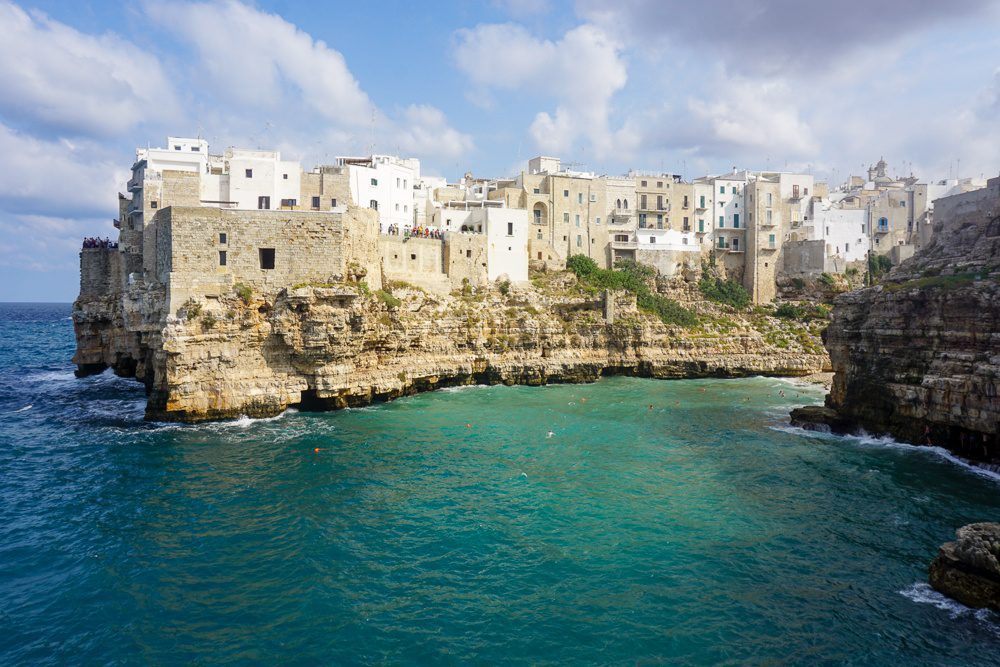
Europe Travel Packing: How to Pack for Europe
One of the essentials when traveling in Europe is to pack light.
If you’re like most people, you probably have at least a couple of European cities or areas on your travel itinerary. Dragging and lifting big, heavy suitcases from airports to hotels onto trains and along sidewalks is a stressful hassle that’s just not worth your energy.
So, let’s cut to the chase. You need a few important items to pack lightly, a sturdy piece of luggage, a carry-on bag, and packing cubes.
Rolling Suitcase
This is the rolling suitcase I’ve used for nearly all my trips to Europe over the past several years. And let me tell you, I’ve put this bag through the wringer! It’s proved its durability by being checked at countless airports and rolled through train stations all over Europe, as well as hauled in and out of hotels, metros, and more. Put any doubts aside about whether this piece of luggage can hold everything you’d need for a 2-week trip to Europe. I’ve done it numerous times and even stayed for up to 3 weeks without really needing to do a big batch of laundry. I’ve used a couple of other bags, too, if I’m taking a shorter trip. These honorable mentions go to this 19″ carry-on roller or this backpack which I’ve used for more outdoorsy European adventures.
Packing Cubes
These are the packing cubes that quite honestly I couldn’t live without. They are what makes the above suitcase possible. Depending on how I want to pack, I use 3-4 of these packing cubes to hold all my clothes. The magic comes from the compression. Once you’ve rolled everything inside and zipped the cube, the 2nd zipper compresses the cube down to half its size. If necessary, you can smooth out any lumps by pressing on the cube to even things out. ProTip: Think about how you’ll manage dirty clothes. You could bring an extra packing cube or a dirty laundry bag. You could also shift clothes around as you travel, moving dirty clothes to a single packing cube and clean clothes into all the others.
Carry-on Bag
Without hesitation, this carry-on travel backpack has been my go-to for years. I absolutely love it. This bag has the perfect combination of smart storage compartments, style, and comfort. In fact, this is the most comfortable expandable backpack I’ve ever worn. I store things like my laptop, important travel documents, a change of clothes, and a 1-quart toiletry plastic bag with some necessities for the flight. Fully expanded, it can even hold a few days’ worth of clothes or those extra souvenirs you want to bring back home. ProTip: I like to pack a few extra plastic bags in case something leaks and for things like wet clothes.
Hanging Toiletry Bag
Not only does a hanging toiletry bag keep everything organized and easily repackable for European city-hopping, but it also allows you to keep things like toothbrushes and contact lens cases off the limited counter space around hotel sinks. You can still have all your toiletries hanging in the bathroom when you need them without worrying about knocking them off the sink.
Mini Travel Bottles
No need to take up space in your luggage with full-sized toiletries or create more waste with travel-sized (3.4 oz.) toiletries. These mini travel bottles are all TSA compliant, come in different sizes, and are easy to fill and dispense. Best of all, they’ve never leaked into my bag!
Clothes for Your Europe Travel Checklist
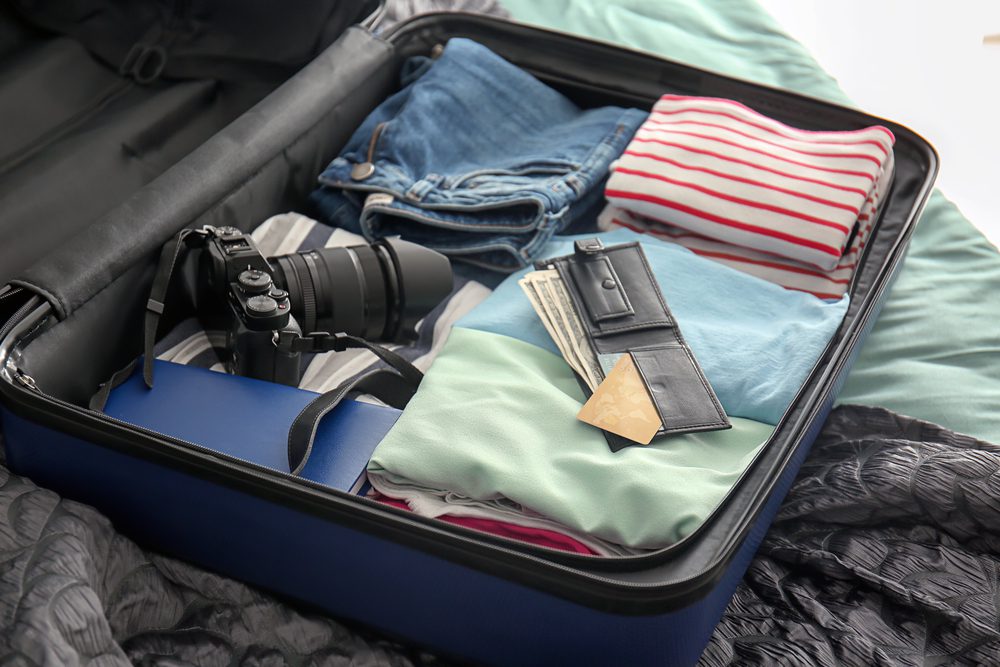
This section is a bit subjective because the clothes you pack will be dependent on the time of year you travel, what you’ll be doing, and your own style. But what to pack for a Europe trip is one of the most common questions I get, so I’ve compiled my best tips and recommendations below.
The most important thing is not to overpack. I know, easier said than done!
One way to avoid this is to plan your outfits, or if that is too difficult, pack clothes in a similar color palette. Pack neutral colors than can be worn with many different things. By doing this, you’ll inevitably have numerous pairings because most of the pieces will go together.
As you begin to pack, lay everything out first. You’ll likely be able to eliminate things that are duplicates (no, you do not need 3 black tops.) or items not in line with the majority color palette of the rest.
There are cliche items to avoid in European cities like flip-flops, workout clothes, or anything too casual like sweatpants or sports jerseys, shorts, super dressy clothing, or clothes meant for hiking and other outdoor activities. Not only will avoiding these items in big cities be more fashionable, but they also help you blend in more. When you blend in more, you’re less of a target for a potential scammer or pickpocket.
Think more along the lines of classic pieces in neutral, soothing, or dark colors. For example, navy, black, beiges, white, and soft pastels. Also, be mindful of clothing that is too revealing, especially if you’re planning to visit cathedrals or other religious sites like in Rome or Seville .
The shoes you pack are also (so!) important.
First, pack at most 3 pairs of shoes including the ones you wear on the flight. Think smart casual and comfortable when choosing which to pack to find a balance between fashion-friendly and comfortable. You’ll likely be walking a lot and oftentimes on cobblestones.
And ladies, unless you have a specific formal event planned, you won’t need high heels. Even if you’re thinking they would be nice to wear for dinner, high heels are near impossible on cobblestone streets and take up valuable suitcase space! Instead, opt for a boot with a chunkier heel if you feel you need something dressy.
The items below are meant to be ideas to help you see what’s typically in my suitcase.
Except for the hottest days of the European summer, jeans always work. They can be dressed up or down and worn with every top you pack. Everyone has a favorite pair of jeans they love so I want to give a shout-out to mine. These Duer Performance jeans are perfect for travel. They have a good amount of stretch and are very durable. What I love is they never seem to stretch out after multiple wears and they’re great for both city sightseeing and hiking. No matter which jeans you pack, go for a pair of dark-wash jeans. They’ll look cleaner for longer! Leggings are timeless, comfortable, take up little space in your luggage, and can be part of a smart casual or even dressier look. In other words, they’re perfect for travel! Other pants I’ve included in my suitcase and are versatile enough for a range of temperatures have been these Duer No Sweat Everyday Pants , these 7/8 joggers , and Eddie Bauer Departure pants . For hot summer travel days, go with wide-leg linen blend pants and other breathable fabrics instead of shorts.
No matter what the season is I like to bring tops in different sleeve lengths that can be worn on their own or under a layer like a cardigan or a blazer. For summer European sightseeing, short sleeves that cover the shoulders will be ok for most Cathedrals. Lightweight and loose-fit tops will be the coolest for walking around a European city. Generally speaking, I pack these 3/4 sleeve shirts or these shirts with long sleeves. Lightweight sweaters are perfect for spring and fall and can mix and match with many different types of bottoms. They can be dressed up with a scarf and boots or worn with jeans and sneakers when you want to be more casual. Classic fit tees always work. And of course, a long flowy top pairs perfectly with leggings.
A top or a bottom layer can make all the difference for both style and comfort! For winter travel in central and southern Europe, a thin, effective base layer becomes your secret weapon. It keeps you warm while you’re walking without adding bulk to your overall look. In northern Europe, like Stockholm or Finnish Lapland , a baselayer top and bottom are essential! For shoulder seasons, a casual blazer that can pair with nearly all of your outfits is a win-win! Cardigans, either lightweight , open front , or something chunkier , go with most types of tops and bottoms and are great for added warmth even for a breezy evening by the sea. A lightweight jacket can come in handy for those cooler spring and fall nights. It’s an added bonus if it has a hood in case you get some rainy days.
Accessories
A scarf is an absolute Europe travel essential! It can add to your overall look and even provide warmth when needed. I always have 1 (or 2) with me when I travel to Europe. Longer scarves create that perfect fall or transition season look. These square scarves are so fashionable and can double as a headband! If you’re looking for something that can double as a scarf and a wrap, these pashmina scarves are perfect. ProTip: As a general rule of thumb, it’s best to wear little or no jewelry when traveling to avoid being a target for potential theft.
Comfortable Shoes!
Perhaps the most important Europe packing decision you’ll make is the shoes you’ll bring. European travel inevitably comes with a lot of walking which will become difficult or even painful with uncomfortable and unsupportive shoes. A Chelsea-style boot works in every European city and can be worn day and night. (In Italy, I think it must be obligatory for every Italian woman to have a pair in black!) These winter boots are stylish and warm in the colder months. Allbirds are some of the most comfortable sneakers I’ve ever worn. Vionic shoes like these and these are great, too, and come with extra arch support. For summer European travel, I never leave home without these sandals . They’ve been an excellent investment and have saved my feet compared to other non-supportive summer shoes. Bottom line – Pack comfortable walking shoes for both day and night. Your feet will thank you!
Europe Travel Essentials FAQs

Is it better to travel with a backpack or suitcase in Europe?
There are pros and cons to both. Personally, I prefer a rolling suitcase and have never found it to be a problem even when traveling from city to city. Yes, there are cobblestones and sometimes no elevators when you need them. However, I’d rather lift my suitcase for a moment just to get up or down some stairs than always carry it on my back.
What size suitcase is best for a 2-week trip to Europe?
I’ve typically traveled with a 24″ suitcase for 2-3 weeks in Europe with the help of my packing cubes. If you need a bit more space, look at a 26″ or a 28″ but I wouldn’t go any bigger than that. Otherwise, it can become a real chore to move from place to place.
Is it better to fold or roll clothes in a suitcase?
Without question, it’s better to roll clothes in a suitcase. It saves space and protects against wrinkles. When rolled clothes are packed within a packing cube, it’s often possible to have 2 layers of rolled clothing inside.
How much should I pack for a 2-week trip to Europe?
In general, you’ll want to pack 3-4 bottoms and 5-6 tops. Dresses are also helpful (but not required) because they are complete outfits that can be dressed up or down. I’d bring 1-2 dresses if they match your style. For shoes, 2-3 pairs are plenty. Above all, comfortable shoes are absolute Europe travel essentials!
Also bring a scarf to use as an accessory, to cover up in conservative places, or for a little warmth. And unless you’re traveling in the absolute heat of summer, pack a blazer or light jacket (jean jacket, trench, etc.), as well as 2 sweaters or items for layering over a lighter top. Be sure the top layers go with the majority, if not all, of your clothes.
If your trip is in the winter, be sure to have a packable winter coat , a warm hat, waterproof boots , and layers. One of my hacks is to pack a couple of base layer tops so I can get added warmth without adding too much bulk to my bag or body!
Essentials for European Travel: Bottom Line

Your travel packing list for Europe needs to include a combination of essential items, gear, gadgets, and clothes. If you take the time to get yourself set up and packed using these packing tips before your trip to Europe, you’ll have done everything you could to ensure a hassle-free, comfortable, and amazing trip!
So, what’s on your checklist for European travel?
Like this post? Please share it using the buttons in this guide!
Your Trip Planning Checklist
- Search for flights with Skyscanner or Momondo .
- Get the best hotel rates with Booking.com and Hotels.com .
- World Nomads makes it easy to get a travel insurance quote for that amazing bucketlist trip you just booked!
- Get Your Guide is my go-to for tours, tickets, and experiences.
- Use my list of travel packing basics to make sure you have what you need for your trip.
- Check out my free miles & points course to learn how to travel for less/free.
- See my full list of travel resources on my resource page . These are what I've used to book travel over the years.
Related Posts

London Trip for the Cost of Dinner and a Show

A Cheat Sheet for Paris First-Timers
Leave a comment cancel reply.
Your email address will not be published. Required fields are marked *
Save my name, email, and website in this browser for the next time I comment.
This site uses Akismet to reduce spam. Learn how your comment data is processed .
Privacy Overview
- Skip to primary navigation
- Skip to main content
- Skip to primary sidebar

Your Complete Europe Travel Checklist (+ Printable Packing List!)
By Lisa Wells January 12, 2020 Updated: December 5, 2023 · This post may contain affiliate links · Leave a Comment

Not sure what to pack for your upcoming trip to Europe? Here’s an easy-to-follow Europe travel checklist that you can use to pack for your upcoming European vacation. You’ll also find tips for planning your Europe travel outfits using a capsule wardrobe and a printable packing list.
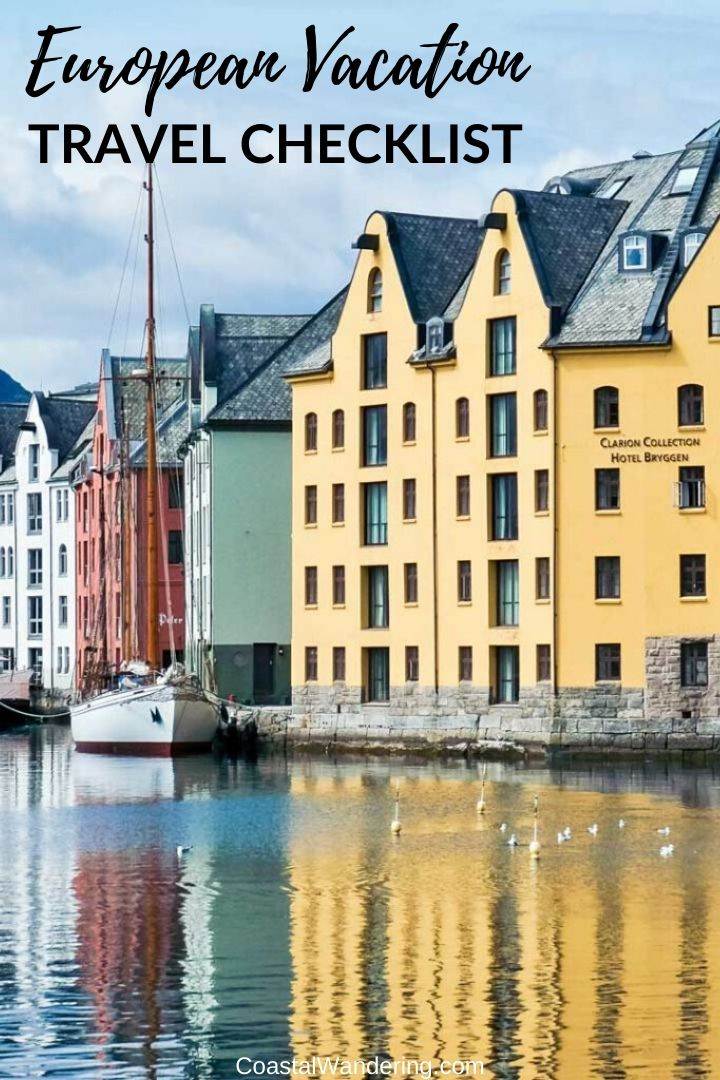
Europe is an incredible continent for travel. Whether you're embarking on a European cruise or setting out to explore on land, there's lots to see and do, and oh-so-much history to explore.
But there's also a lot to know about traveling in Europe, especially if this is your first time. And it's not at all like a US beach vacation or traveling to the Caribbean , where you're much more likely to spend your time shuttling between resort life and planned excursions. From the correct walking shoes to the right size carry-on for European airlines to the perils of dragging a heavy suitcase across those quaint cobblestone roads. Understanding what and how to pack for your European travels can make the difference between an enjoyable vacation and one that's frustrating.
With those frustrating yet avoidable situations in mind, here’s an easy-to-follow checklist that you can use to pack for your next trip to Europe. You’ll also find tips for planning your travel outfits and a printable Europe travel packing list.
Here’s a table of contents for what you’ll find below:
- Luggage & Packing Accessories
- European Capsule Wardrobe
- Toiletries & Makeup Essentials
Must-Have Travel Gadgets
Important travel documents.
- Other Handy Travel Items
Luggage, Travel Containers & Accessories
Just as your European outfit choices might look a little different when compared to domestic or beach travel, so too will your luggage and travel container choices.
Luggage Fit for European Vacations
If you're traveling carry-on only to Europe, you will want to check carry-on luggage size and weight restrictions for each airline and/or land transportation method you'll be traveling.
Unlike domestic flights in the United States and Canada, European airline carry-on restrictions differ. And they're often much smaller than our domestic airlines. Planning for these restrictions will help you avoid surprise penalty fees from having your luggage checked at the gate.
Another thing to keep in mind when choosing your luggage is the ease of use. Particularly along cobblestone roads. With the incredible European history also comes older road infrastructure. We're talking things like cobblestone roads, buildings without elevators and narrow staircases.

To make getting around easier, the luggage that you travel with should take this into account. Traveling in a backpack carry-on (like this one ) can make it easier to get around, especially if you'll be moving frequently between destinations.
If carry-on only travel is out of the question, consider a lightweight hard-shelled suitcase with four sturdy wheels (like this one ). This will help with mobility across cobblestone roads and should help you avoid overweight charges if you indulge in a little shopping.
Travel Containers That Make Packing Easy
From a carry-on friendly liquid bag to travel packing cubes , clever travel containers can help make packing for your European vacation much easier.
Ensuring that your carry-on liquids are 3-1-1 compliant is especially important if you're traveling carry-on only, but this is something to pay attention to even if you're checking luggage. I've seen too many fellow travelers have their expensive, high-end toiletries confiscated at security!
I like to decant my products into smaller travel-friendly containers. I like these for cosmetics and these for liquid shampoo, conditioner and body wash.
Create a Capsule Wardrobe for Europe
Planning a capsule wardrobe for European travel can pose an interesting challenge if you're covering a lot of ground while you're away. Unlike planning a capsule wardrobe for a beach vacation , you're more likely to see a wide range of weather across Europe. For example, summer weather in Norway is different compared to the summer weather you'll encounter in Italy.
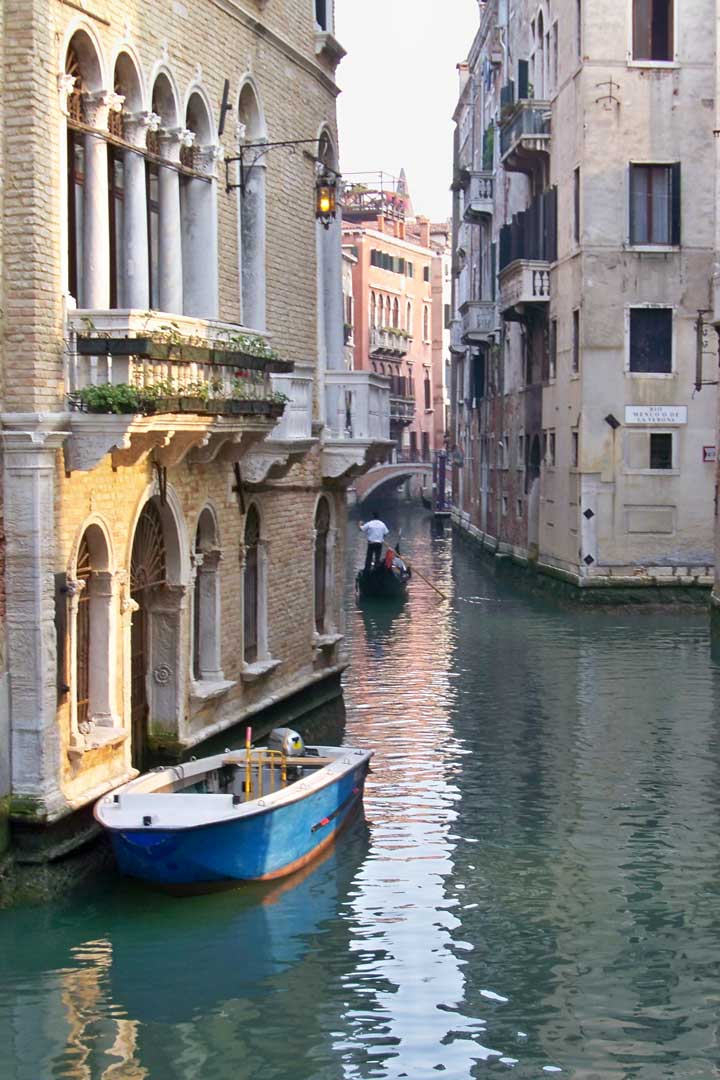
With this in mind, you'll want to gather weather information about each of the locations you'll be visiting. You'll also want to think a bit about the activities you'll be doing while you're away and whether you have access to laundry facilities. This will help you pack appropriately and help you feel more prepared.
Planning the Core of Your European Capsule Wardrobe
As a general guideline, vacations spanning one to two weeks will require a capsule wardrobe that includes about 10 to 12 core pieces of clothing. With a capsule wardrobe of this size, assuming that all items go together, you would have at least 18 different outfits to choose from during your time away.
Weather can range widely in Europe, so a summer capsule wardrobe will look different when compared to a winter capsule wardrobe.

For a summer climate, my European capsule wardrobe would include:
- Short-sleeve tops x 4
- Long-sleeve top x 1
- Dresses x 2
- Bottoms (mix of pants and skirts) x 3
- Lightweight jacket x 1
For a winter climate, my European capsule wardrobe would include:
- Long sleeve tops / lightweight knits x 4
- Thin base layer (long-sleeve top + leggings) x 1
- Wool coat x 1
And if you're traveling through a variety of climates, you might consider a capsule wardrobe that includes:
- Short-sleeve tops x 3
- Long-sleeve top x 3
- Mid-weight jacket x 1
Extra pieces, depending on your vacation activities, might also include:
- Scarf / pashmina x 1
- Versatile bathing suit x 1–I love traveling with this one
- Hat x 1– this one is my favorite travel hat
And no matter the weather, you'll want to plan your shoes properly. Heels (even low ones) are not overly practical because of the cobblestone roads you're likely to encounter. Your best bet is to opt for a chic little loafer with lots of support (I love these ones from Arcopedico). Versatile and practical, keeping your outfit looking stylish while also protecting your feet and ankles from uneven roads and walkways.
Tips for a Versatile European Capsule Wardrobe
Here are my top three tips for planning a European capsule wardrobe with maximum versatility in mind:
- Choose a cohesive color story. The most versatile capsule wardrobes revolve around one accent color and two supporting neutrals. If you're feeling stuck, try pulling your color story from a patterned scarf. I usually travel with one and love using it as the inspiration for my capsule's color story.
- Make sure each piece goes with all the other pieces. The only reason to pack a single-use item of clothing is for a specific activity or event you need that item for, like a wedding.
- Pack multi-use items. For example, use the scarf you wore on the plane as a pashmina for visiting cathedrals and a cover-up if you spend an afternoon beachside.
Toiletries & Makeup Bag
I don't know about you, but I like to keep my toiletry bag light. My motto for vacation toiletries and makeup is: keep it simple. You'll quickly notice that Europeans typically wear less makeup, so the less-is-more approach will probably help you feel more at home among the locals. Plus, who wants to bother lugging around lots of makeup and beauty products on vacation!?
Here are the must-haves in a keep-it-simple toiletries and makeup bag:
- Eyebrow pencil–defined brows go a long way in pulling together a minimal makeup look!
- Powder blush
- Tinted moisturizer–with SPF 20 to provide a little extra protection
- Sheer lipstick that works as lip balm (I keep Twig on me at all times)
- Remover wipes for low-effort makeup removal
- Purifying shampoo–perfect for keeping locks feeling clean and hydrated while on the road
- Body moisturizer
- Face moisturizer
- Sunscreen stick
- Deodorant (the charcoal one is my favorite–use code LISA for 10% off)
- Bar soaps & shampoos –great if you travel carry-on only and want to save space in your 3-1-1 liquids bag
Simple, right? No need to pack a huge makeup and toiletries kit. Instead, figure out your own version of a five minute face and trust that that's all you need to look your best on the road.
There are a few travel gadgets that I don't leave home without because they make life on vacation easier, more enjoyable and more fun!

Here are the tech items you should pack on your European vacation:
- Phone & phone charger
- DSLR , camera charger, extra battery & memory card if you don't want to rely on your phone cam
- Kindle reader –perfect for long flights and train rides
- Travel adapter
Proper packing for your upcoming travels goes beyond your wardrobe and travel gear. It's best to prepare for the unexpected–nobody likes to think about the things that could go wrong on a vacation, but the truth is you (or your travel buddies) could get sick or hurt.
Begin by reviewing travel advisories and vaccine and visa requirements for all countries you'll be visiting well before your departure date–at least 14 days. This will give you time to take care of any steps you may need to take to make sure your travel plans proceed as planned.
These are the documents you shouldn't leave home without:
- Passport–aim for six-months validity whenever you're traveling abroad
- Immunization records
- Travel insurance
- Foreign currency–in this case, euros and possibly pounds if you'll be stopping in the UK
- Boarding pass–I save space by using a digital wallet
- Travel itinerary–this also goes in my digital wallet (unless I’m taking a multi-country trip and think I may need to supply it at customs)
- Credit cards
- Driver's license or some other alternative form of personal ID
- Emergency contact info
I know many travelers that travel with a back-up copy of all the above-mentioned travel documents in a hard-copy format, but I prefer to travel with them stored on a USB thumb drive . I usually tuck it into my first-aid kit and keep it separate from originals (just in case).
Other Handy Travel Items To Pack
And while none of these products are essential for European vacations, they make life a little easier while you're on the road.
- Waterproof bag –great if you'll be catching some beach time in the Mediterranean
- Microfiber towel –handy if you'll be spending time by a beach or pool
- Reusable shopping bag –for impromptu shopping trips
- RFID travel wallet –perfect for keeping all your travel documents organized
- Collapsible water bottle –water fountains are far and few between in Europe
Grab Your Travel Checklist & Get Packing!
Now that you know what to pack for your European adventure, it's time to put this knowledge into action! Grab your Europe travel checklist and get started with your packing!

Looking for other travel packing tips? Check these out:
- How to pack for a beach vacation in just a carry-on
- What you need to pack for a cruise vacation
- The essential beach gear you need for a relaxing day at the beach
More Coastal Travel

Reader Interactions
Leave a reply cancel reply.
Your email address will not be published. Required fields are marked *

COMMENTS
Important documents for driving in Europe. Full, valid driving licence and national insurance number. Proof of vehicle insurance. Proof of ID (passport) V5C certificate (the 'log book') Travel insurance documents. European Breakdown Cover policy number and documents.
• Travel insurance documents • European Breakdown Cover policy number and documents • Before you travel ensure your vehicle's tax and MOT are valid and up-to-date • Crit'air sticker (find out if you need one here) Equipment: • Reflective jackets (there must be one for each passenger and be kept within the cabin of the car).
RAC > Drive > Travel > Driving in Europe. Driving in Europe. Travel. Driving in Europe checklist. Travel. Channel Tunnel - car and driving video guide. Travel. ... Driving in Europe checklist. 10th April 2024. Driving abroad in 2024? Be prepared, take out European Breakdown Cover. 2nd April 2024.
RAC Premium Family European Driving Kit. For 2 adults 2 children. £39.99. Shop Now. Kit includes: Warning Triangle x2. UK Sticker. Headlamp Beam converters. First Aid Kit.
The RAC European Driving Kit includes: Warning Triangle. First Aid Kit (22pcs) UK Sticker. Headlamp Beam Converters. Adult High Visibility Vest. Universal Bulb and Fuse Kit (10pcs) Nylon Carry Bag. The European Driving Kit ensures that you have the tools to warn other motorists of an emergency, fix small issues with the vehicle and to be able ...
Check if you need an emissions sticker to avoid a £70+ fine. Depending on where you're planning to drive in Europe, you may need to display an emissions sticker or badge on your windscreen. Several countries on the Continent require you to do this to drive through certain cities at certain times, to curb pollution.
Driving in Europe checklist. When you're planning a driving holiday to the Continent, use our handy travel checklist to make sure you're not caught out. You will need the following: Valid passport. Travel tickets. Foreign breakdown cover. Insurance for your car. V5C registration document or permission from the vehicle owner to take the car ...
Companies such as the AA and RAC will sell you a European driving kit bundle containing all of the above. Get your documents in order You will need to carry your driving licence with you.
If the UK does leave without a deal: Whether hiring a car or driving your own, it's likely that you will need an Insurance Green Card and an International Driving Permit. Only drivers with a UK paper licence will need an IDP to drive in Austria, Estonia, Germany, Greece, Latvia, Lithuania, Norway and Poland. You will also have to have at least ...
Call us on 0344 381 9990 for a quote or request a callback at a time better suited to you. The experts at Sterling give you a checklist for all the documentation you need, plus the extra equipment you should pack when driving your car in Europe, whether for business or pleasure.
You can trust the RAC with our local approved garages and NEW mobile mechanics. Book now. *Max 40% applies to new Complete cover for 1 vehicle. Ends 02/10/24, 7am. ^At least 10% of new customers paid this or less 12/08-14/09. Comparison based on theaa.com closest equivalent cover at 17/09/24. We offer the latest driving travel tips including ...
European Health Insurance card . In addition to the checklist above, the next best thing to do is to familiarise yourself with the driving laws, specific entry requirements and compulsory items to carry for the countries you will be driving in. You can find everything you need to know on RAC's European countries advice pages below. Driving in ...
To travel in the EU, you either need a number plate with a UK flag on it or a UK sticker that's clearly displayed on the rear of your car*. Contact your local Halfords store to find out how to order a UK number plate or buy a UK sticker online. Please note: On September 28th 2021, 'UK' stickers replaced 'GB' stickers.
Cancel your newspapers, hold your mail delivery, and prepay your bills. Make a list of valuables that you're bringing (such as electronics). Include serial numbers, makes, and models, and take photos of your items to serve as a record for the police and your insurance company should anything be stolen. Check airline carry-on restrictions.
Breakdown in Europe +33 472 43 52 44 Bringing your vehicle back to the UK after a breakdown 0330 159 0342 European Legal Care claims 0333 202 2981 Get in touch Telephone Post/email Customer Services 0330 159 0360 RAC Financial Services Limited Great Park Road Bradley Stoke Bristol BS32 4QN [email protected]
Driving licence laws in France. Visitors must be aged 18 or over and hold a full, valid driving licence to legally drive in France. Riders of mopeds or motorcycles up to 125cc must be aged 16 or over. Driving licences issued in the UK, the EU and EEA countries are accepted. International driving permits are recognised but not required.
RAC European Breakdown Cover allows 9 people, including the driver to travel as standard, if the vehicle allows it. You'll need to ask for additional cover if you have more than 9 people travelling. If your vehicle breaks down, we may need to organise more than one recovery vehicle, taxi or hire car if it's within your policy limits.
Europe Travel Packing: How to Pack for Europe. One of the essentials when traveling in Europe is to pack light. If you're like most people, you probably have at least a couple of European cities or areas on your travel itinerary. Dragging and lifting big, heavy suitcases from airports to hotels onto trains and along sidewalks is a stressful ...
And if you're traveling through a variety of climates, you might consider a capsule wardrobe that includes: Short-sleeve tops x 3. Long-sleeve top x 3. Dress x 1. Bottoms (mix of pants and skirts) x 3. Mid-weight jacket x 1. Extra pieces, depending on your vacation activities, might also include: Scarf / pashmina x 1.
Travel & Touring; European Driving Kits; European driving kits; RAC Premium European driving kit; RAC Premium European driving kit. £34.99. Add to Basket . Home Delivered. £34.99. ... 1 Comparison based on RAC Extra European Breakdown Cover against the top level of cover from other major providers as of 16/05/23.
European. Travel. Checklist. Produced by Lifesure Insurance Broker, 2023. Page 1. Travelling to Europe may be. something you've dreamed of. ... RAC motorhome. breakdown cover. Page 8. Lifesure Group Limited is a Company registered in England and Wales, registration number 977416. Our registered office is 3 Fenice Court, Phoenix Park, Eaton
1 Driving in Europe European fuel prices - Petrol and diesel prices in Europe. 2 Driving in Europe Channel Tunnel - car and driving video guide. 3 Air quality Crit'Air clean air stickers - your guide for driving in France. 4 Driving in Europe Driving in Europe checklist. 5 Driving in Europe A complete guide to toll roads in France.
European breakdown cover provides roadside assistance, recovery and onward travel services when driving in Europe. If your vehicle breaks down, you can call for help which could be roadside repairs or transport to a garage. Our 24/7 English-speaking helpline makes it easy to get help quickly. European roadside assistance in 48 countries.